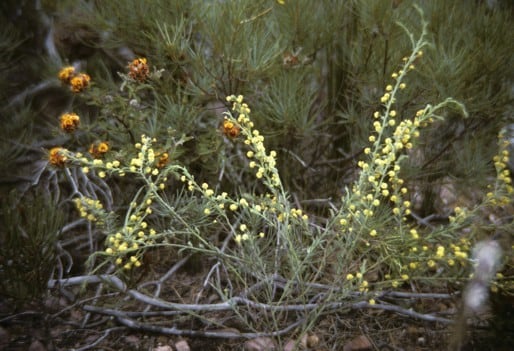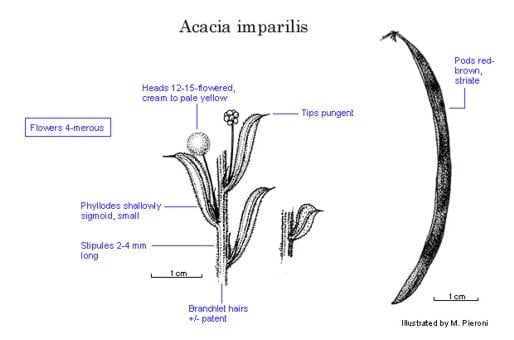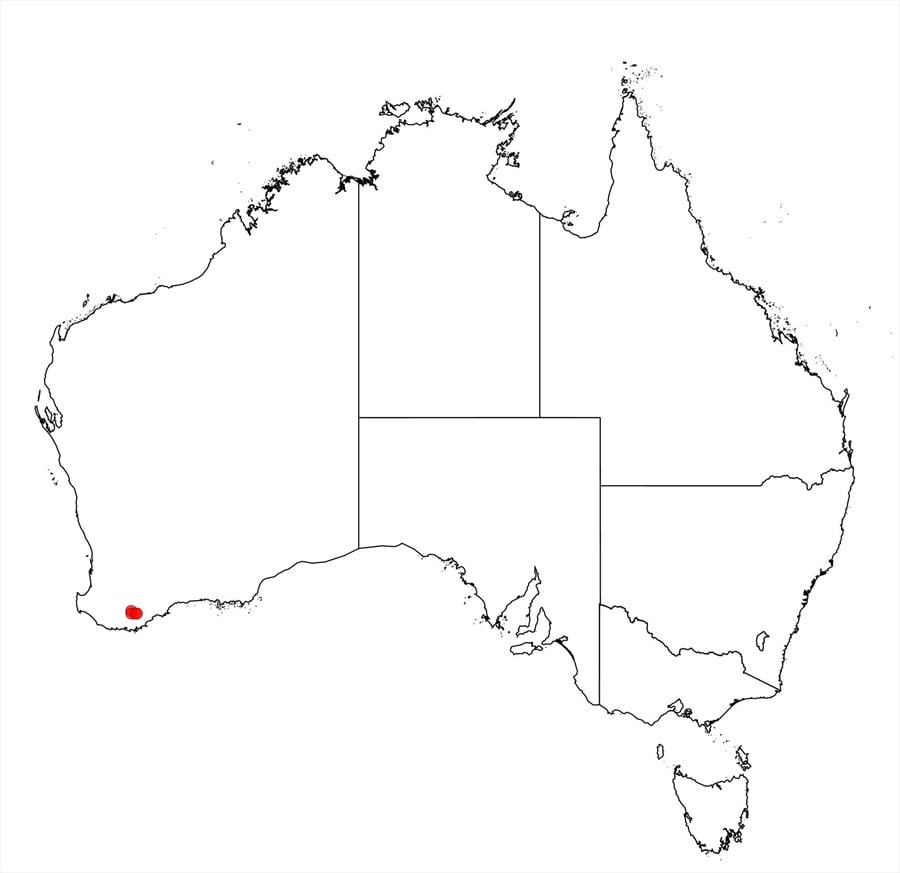Acacia imparilis Maslin
WATTLE
Acacias of Australia
Family
Fabaceae
Distribution
Known from only two localities in the western extremity of the Stirling Ra., south-western W.A.
Description
Erect or sprawling subshrub 0.2–0.7 m high. Stems slender and pubescent. Stipules linear to linear-triangular, 2–4 mm long. Phyllodes ascending to erect, inequilaterally narrowly oblong, oblong-elliptic, obovate or oblanceolate, mostly shallowly sigmoid, 6–16 mm long, 2–4.5 mm wide, subuncinate at the rostellate or obliquely narrowed apex, pungent, green, with indumentum as on branchlets except sometimes sparser, 1-nerved. Inflorescences simple, 1 per axil; peduncles 7–10 mm long, slender, glabrous; heads globular, 12–15-flowered, cream to pale yellow. Flowers 4-merous; sepals free; petals nerveless. Pods (immature) linear, shallowly curved, ±flat, to 5 cm long, 2.5–3 mm wide, red-brown, longitudinally nerved, strigulose. Seeds (immature) longitudinal, oblong, c. 5 mm long; aril terminal, conical.
Habitat
Grows on rocky hills in open or closed mallee scrub.
Specimens
W.A.: Mt Hamilla [Hamilla Hill], E.M.Canning WA/68 6156 (PERTH); south-west slope of Talyuberlup Peak, R.J.Cumming 1015 (PERTH).
Notes
Phyllodes resemble some forms of A. ferocior (which also occurs in the Stirling Ra.) which can be distinguished by its 5-merous flowers and united sepals; and A. huegelii which is distinguished by its normally 5-merous flowers which lack a calyx.
FOA Reference
Data derived from Flora of Australia Volumes 11A (2001), 11B (2001) and 12 (1998), products of ABRS, ©Commonwealth of Australia
Author
B.R.Maslin
Minor edits by J.Rogers
This identification key and fact sheets are available as a mobile application:
URL: https://apps.lucidcentral.org/wattle/
© Copyright 2018. All rights reserved.








